How I Cured My Eczema in Peru: Part 2 – An Andean Eczema Treatment Plan

There has always been a certain magic about the Andes – it’s a world where the Incans achieved the impossible with their architecture, where tourists are moved speechless by the energy of Machu Picchu, where tradition, dreams, and rituals are revered, where sacred shamans and commoners alike communicate with spirits, and where people from all over the world come to be transformed by ancient healing drugs.
I returned to the Andes last year shrouded by severe eczema, a forlorn skeptic feeling like I was going to be barely hanging on for a two-week trip. Instead, I found myself on a mountain pilgrimage, and whether I believed in the magic or not, I healed. My eczema began to disappear at first with no effort on my part, and then even more so when I embraced the mystery. In scrutinizing my experiences here these past months, I became aware of 10 mechanisms for my own personal eczema cure.
-
Peruvian Medicinal Plants Galore
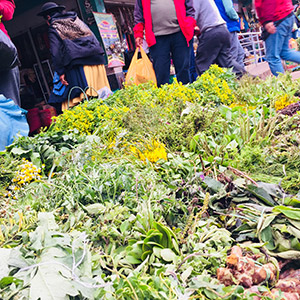
The Tropical Andes (where the Andes meets the Amazon) is the most biodiverse region on the planet, so it’s no wonder that there’s a rich two-thousand-year-old history of benefitting from the wide variety of local plant species for healing. Thousands of Peruvian plants have been identified and are being studied for their “anti” properties: anti-carcinogenic, anti-infective, antiviral, antiparasitic, antibacterial, antifungal, and most importantly for my skin, anti-inflammatory and antioxidant.
When I showed the Huancayo curanderas (traditional healers) my skin, they generally agreed upon assimilation of the following six herbs in a biweekly bath:
- Romero (rosemary)
- Marco (Peruvian ragweed)
- Ruda (rue)
- Santamata (feverfew)
- Ramilla (Senecio rudbeckiaefolius), and
- Llantén (broadleaf plantain)
Other local plants used in traditional medicine that I believe have played a role in my eczema treatment include:
- Aloe vera – A well-known home remedy for healing wounds, reducing skin inflammation, assisting digestion, and treating chronic skin disorders, I consume aloe externally (rubbing a piece of aloe on problem spots) and internally (drinking a mixture of aloe gel and warm water).
- Emoliente – Dating back to colonial Peru over a century ago, this cure-all medicinal drink (a mixture of herbs) is offered by street vendors throughout Peru. Although not meant to be an emollient in the English sense of the word (i.e., skin softener), the term does historically refer to medicine that softens.
- San Pedro – Customarily used in shamanic ceremonies and gaining popularity worldwide, this Andean psychotropic hallucinogen oft recognized as ayahuasca’s counterpart is consumed for self-healing. The time it takes to prepare this mind-altering mescaline cactus is worth the wait for the transformation.
-
Dirty “Old Friends”
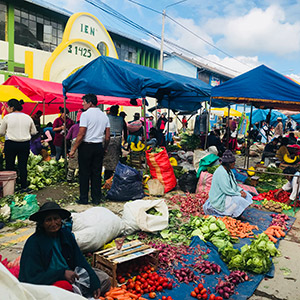
According to the “old friends” hypothesis, the lack of important microbes in developed countries and urban areas may be the cause of allergies and autoimmune disorders (when the immune system attacks healthy cells). These microbes or “germs” are “old friends” because we’ve been in a relationship with them through human history such that they now regulate our immune system, and the way we can hang out with more of these “old friends” is through contact with farms and animals.
Huancayo is situated in the Mantaro Valley, a city surrounded by farmland and enclosed by mountains. The local markets are farmland-esque with farmers bringing in their goods (and dirt) daily, and who needs pets when there are friendly street dogs everywhere? As Dr. Josh Axe recommends, I basically “eat dirt” every day! Maybe I get an extra dose of “old friends” for good measure considering how day-to-day living in Huancayo isn’t overly sanitary:
- There are no dishwashers, produce washes, or hand soap, even when I eat with my hands.
- My normal diet includes unpasteurized milk and raw honey.
- A traditional Peruvian dish, pachamanca (Quechua for “earth pot”), is cooked in the ground.
- At parties, partygoers regularly drink from the same cup.
- Trashcans are rare, so people throw their garbage on the street and leave their garbage bags out for collection.
- You have to keep your eyes on the sidewalk to avoid dog poo.
- Hygiene standards in public transportation, public washrooms, and family-owned restaurants are questionable (e.g., increased probability of finding a hair in my food).
Despite the living conditions and without any extra precautions, I haven’t gotten sick once (neither in BC nor in Peru) since I started taking vitamins and eating healthier. In fact, I’m only getting better.
-
Playtime & Active Adventures
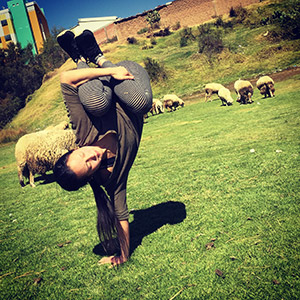
I think of physical activity as increasing circulation to purify my skin internally, transporting cellular waste as fast as possible to get detoxified. Aside from daily yoga, I spend a lot of time taking free dance classes, handstanding, and playing acrobatics because I’m lucky to be part of the community here. Playtime helps me take life way less seriously (repeatedly falling on your bum results in a lot of laughter), which puts everyday stressors into perspective (stress noticeably aggravates my skin issues).
My daily life in Huancayo also involves a lot of walking as nearly everything is within walking distance of my apartment. This can often be an adventure in and of itself because of potholes, mini floods from an ineffective sewage system, dog poo, drainage falling like a shower from above you, water balloons dropped on you in the February carnaval season, sidewalks gone missing, and other obstacles. There are extra challenges when we go hiking nearby – difficult terrain, massive cow dung, angry guard dogs, and other unexpected surprises that make the destination so much more worthwhile.
-
Earthing at the Old Shooting Range
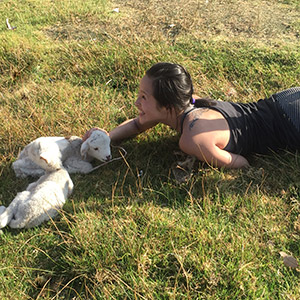
When the weather holds up, I have a weekly date barefooting with pachamama (Mother Earth) at the old shooting range, a huge field where we practice acrobatics, and where people have gathered to play sports in Huancayo for generations. Not only am I literally getting down and dirty with my hands and feet (see point 2 above), but improved proprioception and balance from barefooting also contributes to my exponential advancements in acrobatics this past year, which snowballs into more playtime (see point 3 above).
More directly related to my skin, there has been some recent (potentially sponsored) research that grounding or earthing can reduce stress, improve the immune response, and decrease inflammation (presumably, contributing factors to my skin reactivity). The idea behind grounding is that when my skin is in direct physical contact with the earth’s surface, its rich supply of electrons transfer to me, generating a variety of healthy changes in the body such as neutralizing free radicals and deflecting electromagnetic fields.
If it isn’t the electrons, then maybe it’s the foot massage from knolls and sheep droppings, a kind of natural reflexology or acupressure to balance energy for optimal healing. As one of the most nerve-dense parts of the body, my feet love being rooted to the ground literally and figuratively. The moments I feel grounded, I can be fully present instead of caught up in the anxiety of having a skin disorder.
-
Practice in Patience
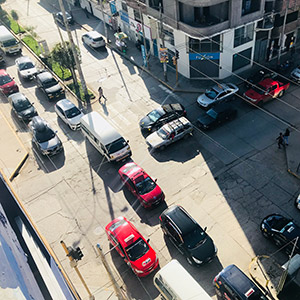
I’ve found that the more patience I develop, the more I go with the flow, the more I embrace what I can’t control, the less reactive I am to life’s trials and then my skin learns to be less reactive too. When things run a little too smoothly as they often do in North America, any deviation can cause chaos (e.g., someone driving over the line on the road); by comparison, when everything goes wrong all the time (e.g., because there are often no lines on the road, not even invisible ones), then you lower your expectations, relax a bit more, and take things less seriously.
Unpredictability can mean failed plans, but failed plans can mean possibility, spontaneity, surprise, and living in the moment:
- Last-minute decisions – Peruvians run on “Peruvian time” (i.e., are chronically late), and it’s commonplace to run out of money, food, or necessities.
- Erratic weather – We can get hail, sun, clouds, thundershowers, and an earthquake in a single day (and Google never gets it right).
- Surprise corruption – Unexpected inspections result in confiscation, demolition, or some other kind of penalization.
- Travel mishaps – You never know which hotels will have bed bugs or mites, and bus delays are typical between Lima and Huancayo due to highway accidents, protests, natural disasters, extreme weather, or vehicle defects.
- Foiled expectations – Restaurants don’t always offer what’s on their menus, and there have been numerous local renovation projects that were inexplicably held up for years (including one of the largest public schools in Huancayo, Colegio Santa Isabel, and most notably, the main city Plaza Constitución).
I believe it’s to my advantage that life is more unpredictable here in the Andes; each time I deep breathe through resistance or uncertainty is like repetition priming or an allergy shot, decreasing my sensitivity to stress in its many forms and thereby decreasing skin inflammation.


T bear
Wow you’re amazing sam.???? well written darling.
T
Samantha Bangayan
<3 <3 <3
Roy A Ackerman, PhD, EA
Glad to see you’ve mended yourself. And, back in Huancayo! Oh- and posting a blog!!!!!!!
Samantha Bangayan
Those exclamation marks!! 🙂 Thanks for celebrating with me on so many counts. 🙂
Pat Amsden
Love your blog. I’d say you’ve got your groove back and you’re having a blast!
Samantha Bangayan
Thanks so much, Pat! 🙂 Love that idea of getting my groove back. Grooving as much as I can!
Peter
Hi,
Just had to reply…
My mom had eczema for 10+ years on her hands. After a visit Peru and also the altitude of Machu Picchu it healed and did nog come back for years now….
Kind regards, Peter…
Samantha Bangayan
So nice to connect with you and hear about your mom’s similar experiences, Peter! 🙂 I can’t even imagine the feeling of having the eczema disappear after so many years of living with it. Hugs to you and your mom!